Andor creator and showrunner Tony Gilroy discusses how 4,000 years of revolutions helped create a riveting political drama, without a Jedi knight or Skywalker in sight
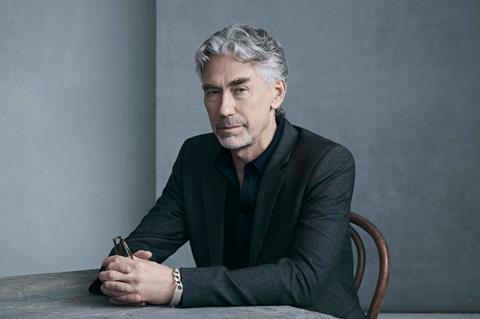
Tony Gilroy had a plan for Andor: 60 episodes across five seasons, each season telling a year in the life of its titular character Cassian Andor (Diego Luna) and leading directly into Rogue One: A Star Wars Story, the feature prequel Gilroy had been drafted in to help during production. But during the making of season one of the critically acclaimed Star Wars spinoff, Gilroy – writer/director of Michael Clayton and screenwriter of The Bourne Identity – realised it was not feasible.
“I was on set in Scotland, finishing the last of the rewrites for season one,” Gilroy tells Screen, “but it must have been on my mind for a month or two before that, because we were making the show and it was such a staggering effort and such a huge expense. It was absolutely unwieldy.” (Forbes put the combined cost for the two seasons of Andor at more than $600m.)
Gilroy was also concerned about Luna’s age, given Andor ends when Rogue One begins and the Mexican actor was then in his early 40s. “Some characters in the show age in the right direction, some don’t. The practical reality was we were not going to be able to do five. By the time I got to Scotland, it was apparent there was no way we could do what we’d agreed.”
As Gilroy sipped a whisky in his hotel garden in Pitlochry, a solution presented itself like “pixie dust”.
Season one was 12 episodes and season two was to be the same, with the UK-based production due to film in four blocks of three episodes. Each block, he reasoned, could represent a year of screen time. He decided to do a proof of concept. “I wrote the top and tail of each one and figured out what they could be.”
The first three episodes of season two were centred around a wedding. “So it’ll be Friday, Saturday, Sunday. Can I get everything in?” Gilroy asked himself. “Well, I can. Can I do that for the next one? Could I do that for all of them? Could it be that elegant?”
The answer was: it could. Not only regarded by many as the best Star Wars series ever made, Andor – which premiered its second season on Disney+ in April – ranks with some of the best television of the past few decades, on a par with The Wire, Breaking Bad and The Sopranos, a rich, novelistic, character-led political drama that just happens to be set in a galaxy far, far away.
Weighty issues
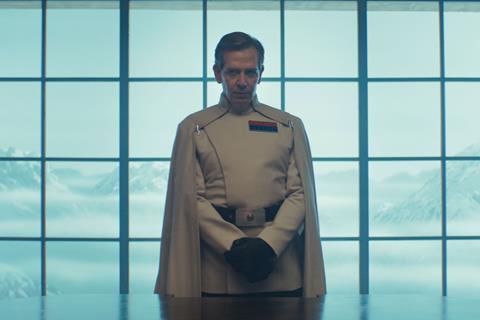
While some Star Wars shows feel like their creators are still playing with their childhood action figures, albeit bigger and more expensive toys, Andor is more akin to The Battle Of Algiers than the Star Wars Holiday Special. It encompasses issues of racism, fascism, authoritarianism, genocide, propaganda and slavery, alongside drug addiction, emasculation and sexual violence, to tell not just Cassian’s journey from “shit bag” to revolutionary leader, but the stories of those on both sides of the political divide, from ordinary people to the elite. Moreover, there is not a Jedi or Skywalker in sight.
History, not the prequels, provided Gilroy’s playbook as he drew on years of “fascist rebellion greatest hits” to create his show. “It was a one-shot deal to tell the story of revolution,” he says. “No-one’s ever going to pay me to do it again.”
In the first episode of season two, Ben Mendelsohn’s Orson Krennic presides over an Imperial meeting to discuss the future of Ghorman, a planet critical to the Empire building the Death Star, the superweapon Luke Skywalker blows up in 1977’s Star Wars: A New Hope. Gilroy likens this meeting to the 1942 Wannsee conference, where the Nazis plotted the Final Solution.
“I didn’t lift anything directly,” he reveals, “but propaganda ends up as a component, false flag ends up as a component, genocide ends up as a component, and the dissolution of a political body. How do fascist states consolidate their power? One of the ironic things about fascism is it usually ends up consuming its own proponents just as quickly.”
The Ghormans, meanwhile, are drawn as the French resistance, down to their costumes and language (a made-up dialect but heavily influenced by French), with Gilroy casting mostly French actors. “We thought, how can we make it specific, so it’s not just a bunch of east Londoners, Scots and Welsh people? What if we get a bunch of French actors? It seemed a little crazy, but I was a big fan of [TV series] A French Village, about the [Nazi] occupation, and [stars] Richard Sammel and Thierry Godard were available, so we started building it from there.”
Season two’s writers’ room was made up of Gilroy, his brother Dan, writer/director of Nightcrawler, Beau Willimon, creator of House Of Cards, and Tom Bissell. But Gilroy was the overseer, perfecting every script before filming, finishing the last rewrite less than a week before the 2023 WGA strike curtailed his involvement. That said, Gilroy rarely went to set, even when able to visit.
“A director shows up and it’s the showrunner and boss, suddenly everybody’s looking at you. Every time I did go, it got warpy,” recalls Gilroy, who empowered his directors – Ariel Kleiman, Janus Metz and Alonso Ruizpalacios on season two – in a manner not often associated with TV. “They’re usually rushed for prep, told what to do and asked to shoot coverage, and don’t get to do their final cuts. We wanted to reverse that.”
Aside from Kleiman, Metz and Ruizpalacios, the core creative team was the same as season one, headed up by Gilroy, executive producer Sanne Wohlenberg, editor/executive producer John Gilroy, costume designer Michael Wilkinson and UK production designer Luke Hull, who won an Emmy for Chernobyl. Gilroy calls Hull his “first collaborator”, helping build not only the look of the show, but its story, too.
“He’s like a Mozart. He designs sets that directors walk on and immediately start seeing shots. At one point, we almost lost him to something else, and Sanne and I thought, ‘If we can’t have Luke, we may not make the show.’”
As with the first, Andor season two filmed on practical sets and real locations – Valencia’s Palau de les Arts Reina Sofia and Hemisferic among them – with visual effects used to enhance its worlds, not to create them, in contrast to other Star Wars shows that have relied on the ‘volume’ virtual stages. The production even grew a 200-acre rye field for the planet Mina-Rau, which features in Andor’s opening three episodes. (When the 2023 SAG-AFTRA strike shut down production before work on Mina-Rau was completed, the rye was harvested, stored and used for a replacement set built on Pinewood Studios’ 007 Stage once shooting recommenced.)
Including Rogue One, Gilroy has spent a decade working on Star Wars, equating the production of Andor to making eight movies in five years. “I did some shit in between, but nothing worked out. Fortunately, I wrote something else over the summer. I inoculated myself against freezing up or fear of that.”
He is talking about Behemoth!, a feature script set in the world of film scoring with Oscar Isaac attached, which Gilroy is hoping to make. But today the showrunner is saying goodbye to Andor, with the final three episodes dropping not long after he speaks to Screen.
“After tomorrow there’s no more potential, it’s all out there. It’s a lot more emotional than I’m giving it space for right now in this conversation.”




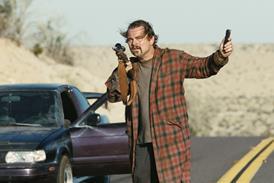
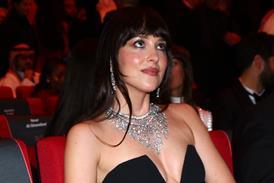

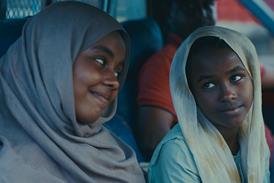

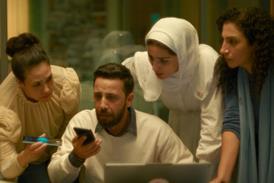


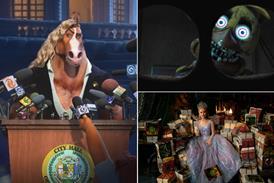



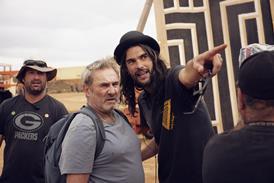







No comments yet